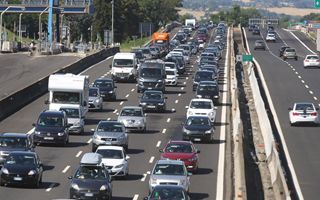(Finance) – In 2023, Italy is at the top in Europe for car fleet in circulation. In fact, the Bel Paese records the higher motorization rate of the EU: 694 cars per 1,000 inhabitants against the European average of 571. The rate continues to grow by an average of 1.3% per year since 2018, much more than in the other major economies of the Union (Germany +0.7%, Spain +0.4%, France +0.3%).
Motorization rates increasing in all capitals metropolitan areas, some of which had recorded a decline in this indicator between 2018 and 2021. Among the big cities exceed the national average Catania (815 cars/1,000 inhabitants), Reggio Calabria And Cagliari (over 700).
More vehicles per square km in large cities and in the South: in 2023, the capitals will have an average of 3,970 vehicles per square km of urbanized surface, with a maximum of 7,523 in Naples and a minimum of 1,647 in Lucca. The density is higher on average in the metropolitan capitals (5,149 vehicles/square km) and in those of the South (4,540). Among the large cities, seevery high alues they are also noted a Turin, Milan, Palermo and Catania.
A comparison with the local public transport offer suggests that motorization rates tend to be lower in cities with more abundant supply: in the metropolitan capitals compared to the provincial capitals and in the Northern capitals compared to those of the Center and the South.
Not only are the cars in the city increasing, but the car fleet is not making progress towards a greener dimension. The number of vehicles a fossil fuels per capita continues to increase at a national level (from 0.873 in 2022 to 0.878), but it is almost stopped in the cities (from 0.822 to 0.823 in the capital municipalities as a whole), thanks above all to the diffusion, from 2020 onwards, of the hybrid vehicles.
The index it monitors the evolution of the polluting potential of cars continues to improve regularly, falling in 2023 to 110.7 in all the capitals (138.1 in 2018), but in the cities of Noonthe value remains much higher (133.6) compared to those of the North (100.9) and the Center (104.2), close to the balance (100) between more polluting and low-emitting cars.
Hybrid cars are 6.9% of the total in the capital municipalities (more than 10% only in Varese, Milan and Bologna) and electric ones just 0.6% (more than 1% only in Milan, Bergamo, Brescia, Bolzano/Bozen and Trento). The more numerous they are still there petrol cars (47.4%, down 0.8 points per year since 2015). The decline is even slower for diesel cars (35.2%, -0.3 points per year since 2015)
